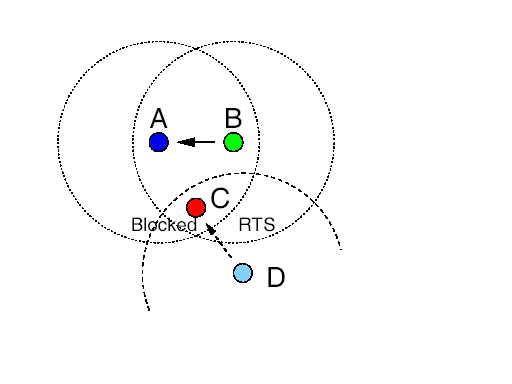Consider the setup shown below.

Suppose node B wants to send data to node A. It first sends a RTS packet. A replies with a CTS packet, after which B transmits its data packets. However, node C, which is within the footprint of B, hears the RTS/CTS exchange and so is disabled. Now, while the data transfer from B to A is taking place,suppose D wants to transmit data to C. It then sends its RTS. However, since C is now disabled, it cannot reply with a CTS. Thus node D enters into an exponential back off mode.
This blocked node problem can propogate through a network as shown.

Node B is transmitting data to A. Since C is within B's footprint, it is disabled. D now wants to transmit data to node C and so sends a RTS packet. C however cannot reply with a CTS and so D goes into exponential back off. However, node E which is within D's footprint also receives the RTS and so is disabled. If now F wants to transmit data to E and issues a RTS packet, it does not get a CTS from E and so it enters exponential back off. Thus the blocked node problem propogates through the network in this fashion. This severly limits the throughput of the network.The nodes E and G are said to be false blocked.